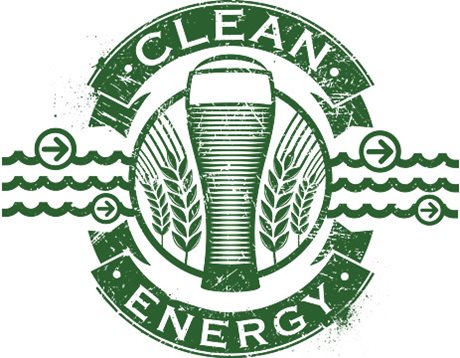
What do you call a living system that guzzles 1,000 gallons of beer every day? “Wasted” comes to mind if the lifeform in question is a human. But the thirsty entity now causing a buzz in the brewing industry is not human but rather a colony of beer-chugging microbes whose bacterial binging actually prevents things from getting wasted.
This high-functioning population of proprietary microorganisms puts the electrochemical kick in a new microbial fuel cell (MFC) under development by a green energy start-up calledWaste2Watergy, Corvallis, OR. Its inventors believe the technology can achieve three critical sustainability goals in beverage production: reducing water use, lowering wastewater treatment costs, and cutting electricity bills.
A pilot project now under way at Widmer Brothers Brewing, Portland, OR, will put the cell to the test. Widmer is one of the nation’s flourishing craft brewers, famous for introducing the cloudy, wheat-based Hefeweizen style to the American market. Portland, the hipster haven known to microbrew lovers far and wide as “Beervana,” is also hopping with research and investment in sustainability. Tapping into the city’s green-beer consciousness is a natural first stop on the technology’s eventual scale-up to macroscale beverage production.
About four gallons of water are required to produce one gallon of finished Widmer beer, says Julia Person, Widmer’s sustainability coordinator. That's about half of the industry's average consumption, she says, but Widmer wants to do even better. The residual wastewater is discharged to the city’s water treatment system at significant cost. The new fuel cell would let the brewer reuse a lot of its wastewater in certain steps of the brewing process, reducing water flowing in and out of the brewery. The electrochemical energy created from microbial reactions in the fuel cell produce a sustainability bonus in the form of electricity.
Symbiotic Cellmates
Waste2Watergy’s design is well suited to beer brewing because its microbes have a powerful Jones for the unique mix of organic material present in Widmer’s wastewater, says Hong Liu, Ph.D., the company’s co-founder and a professor at Oregon State University's biological and ecological engineering department. Waste2Watergy’s aspirations for the technology reach beyond the taproom and into the global arena, where it could provide an efficient, low-cost way of treating wastewater in developing nations. The Widmer project is the technology’s debut field test, funded with a $150,000 grant from a state-funded clean-energy technology program.
“We chose to partner with Widmer because they are very engaged in sustainability efforts, their wastewater has an ideal mix of organic materials for our technology, and they use a lot of water,” Liu says.
The company says the keys to its patented cell are its novel reactor design, high-efficiency separator and electrode materials, and its homebrewed and electricity-making microbes. The 1-cubic-meter cell incorporates an anode where electrochemically active aerobic microorganisms help to oxidize organics in the wastewater, converting it to carbon dioxide, electrons, and protons. These electrons move from the anode through a circuit to a cathode. There they combine with protons and oxygen, becoming water. The inventors predict that a scaled-up treatment system could also generate ample electricity for other brewery needs such as lighting or charging mobile devices.
Brewing Up Efficiencies
Widmer is testing the cell’s potential to improve important metrics for water usage and production efficiency. The cell could help reduce biological oxygen demand (BOD) levels in wastewater – thereby lowering the water treatment tab – because the microorganisms need very little oxygen to fuel their organic-matter binge. Person says brewers also pay close heed to another metric, their water usage ratios (the amount of water needed to produce a barrel of beer) as a key indicator of their process efficiency.
“The project has been going well and we are eager to see the results,” she says. “It sounds like the microbes are adjusting to the make-up of our wastewater. We are already learning things about the characteristics of our effluent and some simple ideas around treatment. A scalable solution of this technology would have a big impact on our operations, not only in reducing our BOD surcharges and impact on the city’s wastewater treatment system, but also in the potential to reroute treated wastewater to other processes.”
If the new technology works as hoped, and can be scaled up for the production line, it could deliver as much as $400,000 per year in savings to Widmer’s bottom line while brightening its clean-energy halo. “If this technology can help us reduce our water usage ratio by cleaning our wastewater so we can reuse it, and in the process generate some electricity, it will be a real win,” she says.


.jpg)

0 comments:
Post a Comment